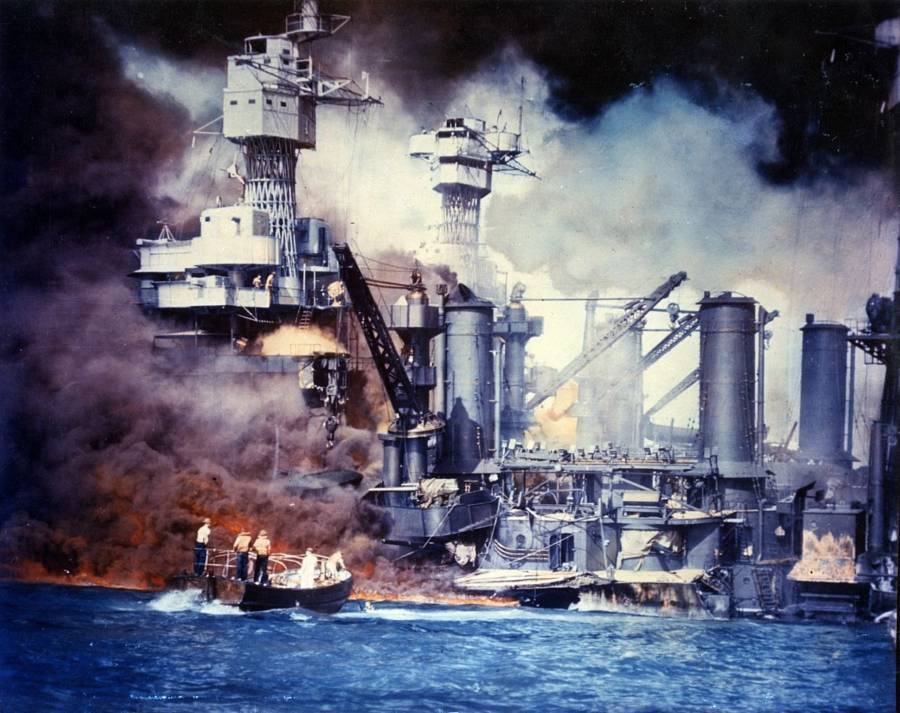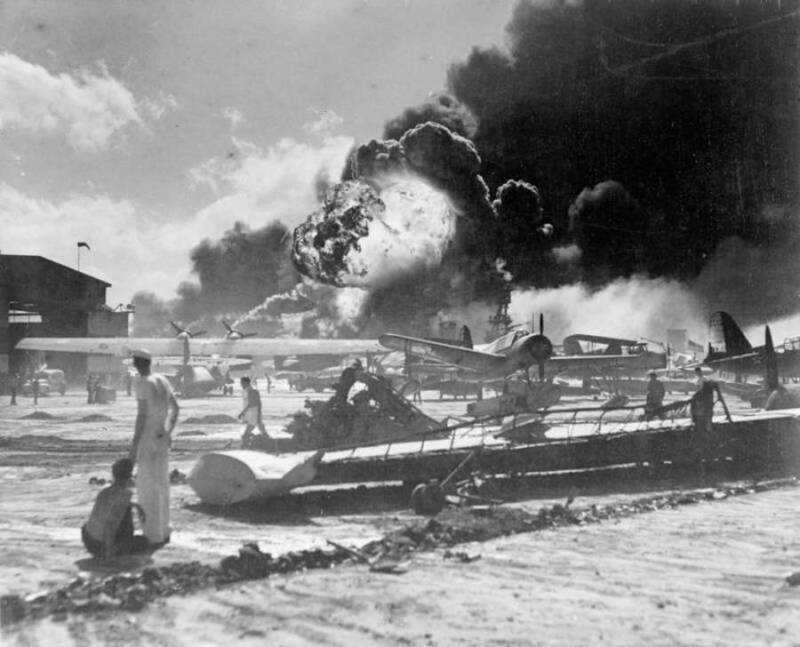The 1941 Attack On Pearl Harbor

Army Signal Corps/U.S. National Archives/Wikimedia CommonsU.S. Navy sailors rescue a survivor alongside the sunken USS West Virginia battleship.
World War II had ravaged Europe for two years before the United States entered the conflict. It was only after the Axis power of Japan bombed the U.S. naval base at Pearl Harbor in Honolulu, Hawaii, on Dec. 7, 1941, that President Franklin D. Roosevelt declared war on Japan.
While the attack on Pearl Harbor was shocking, it should hardly have been a surprise.
Both nations had been inching toward conflict for years. Before the Pearl Harbor attack, the U.S. imposed a litany of sanctions on Japan, hoping to curb its aggression toward China. In response, Japan ramped up hostilities and began planning for one of the deadliest days in American history.
Near the center of the Pacific Ocean, Pearl Harbor lay 2,000 miles from the American mainland and 4,000 miles from Japan. U.S. military leaders were wholly unconvinced Japan would attack such a distant target, and Pearl Harbor was left unprotected — with most of the Pacific Fleet and hundreds of airplanes in the open.

U.S. NavyAmerican sailors watching as the USS Shaw explodes.
Japanese bombs and bullets befell Pearl Harbor at 7:55 a.m. Fifteen minutes later, Japan dropped a 1,760-pound bomb on the USS Arizona’s forward deck — where hundreds of thousands of pounds of ammo were stored. This triggered a giant explosion that sank the 33,000-ton vessel and killed 1,177 sailors in an instant.
A coordinated torpedo attack sank the USS Oklahoma with 400 sailors trapped inside. Intent on destroying the U.S. Navy’s Pacific Fleet to continue expansions in the South Pacific at ease, Japan had managed to cripple every single battleship and over 300 airplanes at Pearl Harbor in less than two hours.
Unbeknownst to Japan, however, aircraft carriers had become far more critical to the U.S. than battleships — and none of America’s carriers were moored at Pearl Harbor on Dec. 7. Nonetheless, it was one of the deadliest days in U.S. history as 2,403 sailors, soldiers, and civilians were killed, and 1,000 were wounded.





